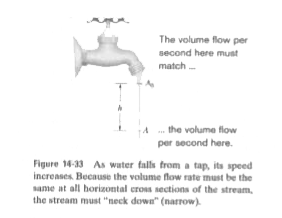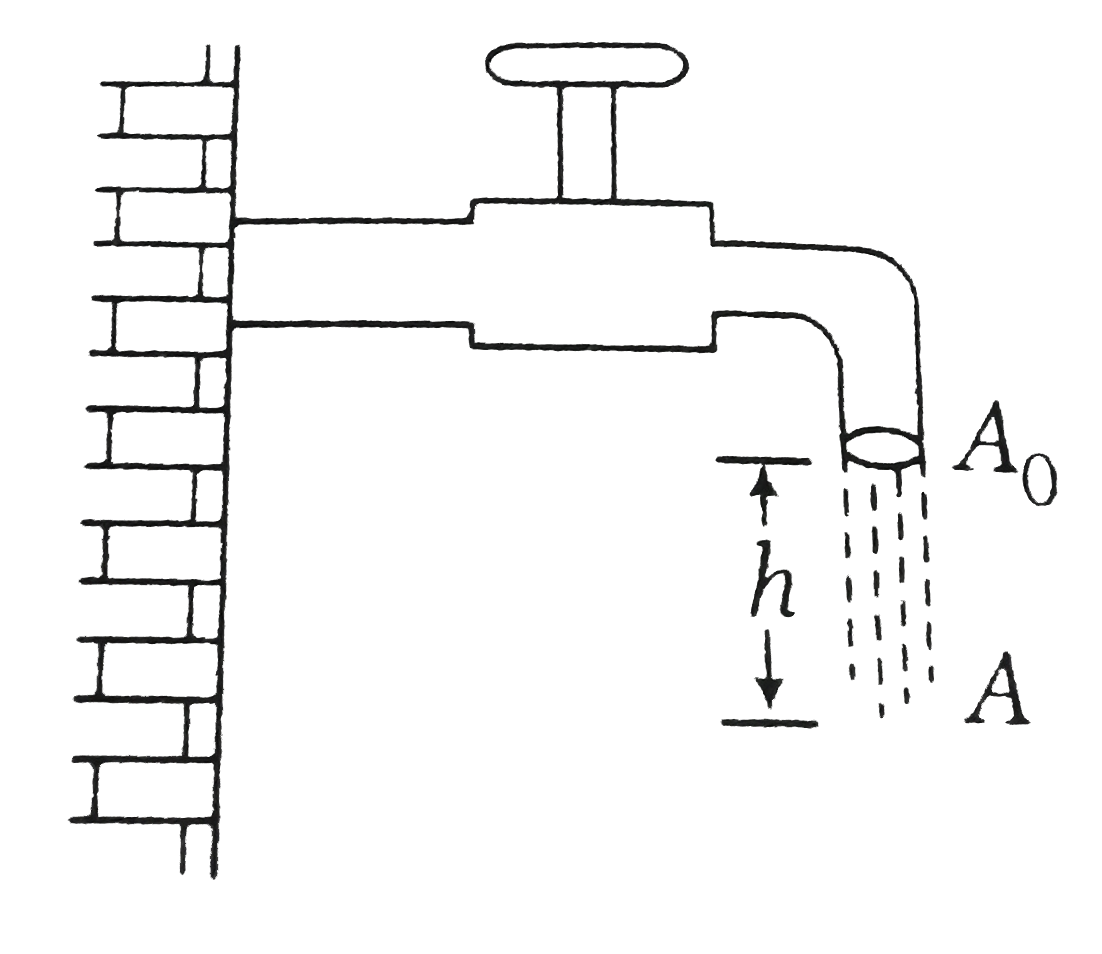Why does a stream of water from a faucet become narrow as it falls?
To understand why a stream of water from a faucet becomes narrow as it falls, we can break down the explanation into several steps:
Step 1: Understanding the Initial Condition
When water flows from a faucet, it starts as a relatively wide stream. This is because the water is under pressure and is being pushed out of the faucet opening.
Hint: Think about how the water is initially being forced out of the faucet.
Step 2: Effect of Gravity
As the water stream falls, gravity acts on the water droplets. The force of gravity pulls the water downwards, causing the stream to accelerate.
Hint: Consider how gravity affects the motion of the water as it falls.
Step 3: Conservation of Mass (Continuity Equation)
According to the principle of conservation of mass, the mass flow rate must remain constant in a steady flow. As the water falls, the cross-sectional area of the stream decreases to maintain the same volume flow rate. This means that if the area decreases, the velocity of the water must increase.
Hint: Recall the equation of continuity: A1V1 = A2V2, where A is the cross-sectional area and V is the velocity.
Step 4: Surface Tension
Surface tension plays a role in maintaining the shape of the water stream. The cohesive forces between water molecules cause the stream to minimize its surface area. As the stream falls and the velocity increases, the water molecules tend to pull together, resulting in a narrower stream.
Hint: Think about how the properties of water, like surface tension, influence its behavior as it flows.
Step 5: Final Observation
As a result of the combined effects of gravity, conservation of mass, and surface tension, the stream of water narrows as it falls. The faster-moving water at the bottom has a smaller cross-sectional area compared to the wider stream at the top.
Hint: Visualize the stream of water and how it changes shape as it descends.
Conclusion
In summary, a stream of water from a faucet becomes narrow as it falls due to the effects of gravity, the conservation of mass, and surface tension, which together influence the flow characteristics of the water.
When water flows from a faucet, it starts as a relatively wide stream. This is because the water is under pressure and is being pushed out of the faucet opening.
As the water stream falls, gravity acts on the water droplets. The force of gravity pulls the water downwards, causing the stream to accelerate.
According to the principle of conservation of mass, the mass flow rate must remain constant in a steady flow. As the water falls, the cross-sectional area of the stream decreases to maintain the same volume flow rate. This means that if the area decreases, the velocity of the water must increase.
Surface tension plays a role in maintaining the shape of the water stream. The cohesive forces between water molecules cause the stream to minimize its surface area. As the stream falls and the velocity increases, the water molecules tend to pull together, resulting in a narrower stream.
As a result of the combined effects of gravity, conservation of mass, and surface tension, the stream of water narrows as it falls. The faster-moving water at the bottom has a smaller cross-sectional area compared to the wider stream at the top.
In summary, a stream of water from a faucet becomes narrow as it falls due to the effects of gravity, the conservation of mass, and surface tension, which together influence the flow characteristics of the water.
Topper's Solved these Questions
- Mechanical Properties of fluidsBook:SL ARORAChapter:Mechanical Properties of fluidsExercise:Exercise
Explore 459 Videos
- Mathematical toolsBook:SL ARORAChapter:Mathematical toolsExercise:Exercise
Explore 20 Videos
- Mechanical Properties of SolidsBook:SL ARORAChapter:Mechanical Properties of SolidsExercise:Example
Explore 113 Videos
Similar Questions
Fig shows how the stream of water emerging from a faucet "necks down" as it falls . This change in the horizontal cross- sectional area is characteristic of any laminar (nonturbulant) falling stream because the gravitational force increases the speed of the stream . Here the indicated cross-sectional areas are A0=1.2cm2 and A=0.35cm2 . The two levels are separated by a vertical distance h = 45 mm . What is the volume flow rate from the tap ?

View SolutionWhy does ice oat in water ?
View Solution
Knowledge Check
Figure shows how the stream of water emerging from a faucet necks donw as it falls. The area changes from A0 to A through a fall of h. At what rate does the water flow from the tap ?
 AA0√2ghA2A20−A2B2A0√ghA2A20−A2CA0√gh2D2A ⎷ghA20A20−A2
AA0√2ghA2A20−A2B2A0√ghA2A20−A2CA0√gh2D2A ⎷ghA20A20−A2Statement-1: The stream of water emerging from a wate tap "necks down" as it falls.
Statement-2: The volume flow rate at different levels is same.AStatement-1, is true, Statement-2 is true, Statement-2 is correct explanation for statement-1BStatement-1 is true, statement-2 is true, statement-2 is NOT a correct explantion for statement-1Cstatement-1 is true, statement-2 is falseDstatement-1 is false statement-2 is true
Why does ice float in water ?
View SolutionWhy does hard water not from lather with soap ?
View SolutionWhy does calcium float in water?
View SolutionWhy clear streams appear shallow ?
View SolutionWhy does astraight rod appear bent in water ?
View SolutionWhy does an iron ship float on water ?
View Solution